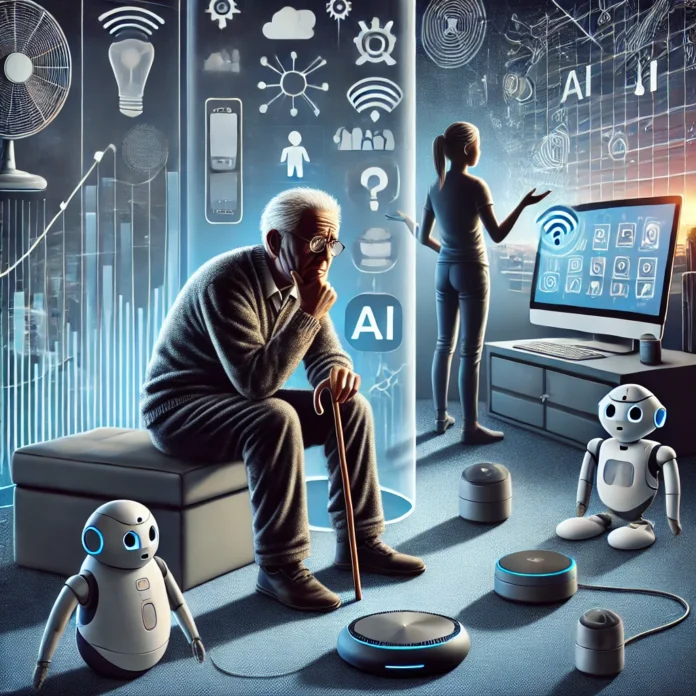Artificial Intelligence (AI) has revolutionized various aspects of life, from healthcare to communication. While its benefits are undeniable, its rapid integration into daily life has also introduced several challenges—particularly for the elderly. As AI-driven technologies continue to evolve, older adults often find themselves struggling to adapt, leading to increased isolation, security concerns, and even diminished independence.
1. The Digital Divide and Social Isolation
AI-powered devices and applications are designed to make life easier, but they also require a certain level of digital literacy. Many elderly individuals, especially those who did not grow up with advanced technology, struggle to keep up with AI-driven changes. From smart home systems to digital banking, the growing reliance on AI can make older adults feel alienated.
Additionally, AI-driven social interactions—such as chatbots and virtual assistants—are replacing human interactions in many service industries. With banks, hospitals, and even government offices relying on automated systems, elderly individuals often find it difficult to get personalized assistance, leading to frustration and a sense of disconnection from society.
2. Loss of Independence and Over-Reliance on AI
Smart home technology and AI-driven caregiving solutions can be beneficial, but they also risk reducing an elderly person’s independence. For example, AI-powered reminders and home automation may discourage cognitive engagement, as older adults may become too dependent on machines rather than keeping their minds active. Additionally, AI-powered monitoring systems, while designed for safety, can sometimes feel intrusive, making seniors feel like they have lost control over their own lives.
3. Security and Privacy Concerns
AI technology comes with significant privacy risks, and older adults are particularly vulnerable to online scams and data breaches. With the rise of AI-powered fraud schemes, such as deepfake scams and phishing attacks, seniors are more at risk of being deceived. Many older individuals are not well-versed in cybersecurity, making them easy targets for AI-driven financial fraud and identity theft.
Moreover, AI collects vast amounts of personal data to improve user experience, but elderly individuals often lack awareness of how their information is being used. Smart devices, voice assistants, and AI-powered health monitoring tools gather sensitive data that could be misused, putting seniors at risk of exploitation.
4. Job Displacement in the Elderly Workforce
Many older adults continue to work beyond retirement age to remain financially stable. However, AI-driven automation is rapidly replacing jobs in various industries, leaving many elderly workers struggling to adapt. With AI performing tasks that once required human effort, older employees may find it harder to secure employment due to a lack of technical skills. This displacement can lead to financial insecurity and increased stress, affecting their overall well-being.
Conclusion
While AI has the potential to improve many aspects of life, it is important to acknowledge its drawbacks, especially for the elderly. As society continues to embrace AI-driven advancements, there must be a conscious effort to make technology more inclusive and accessible for older generations. Implementing AI literacy programs, improving user-friendly designs, and maintaining human-driven customer service can help bridge the gap and ensure that the elderly are not left behind in an increasingly AI-dominated world.





